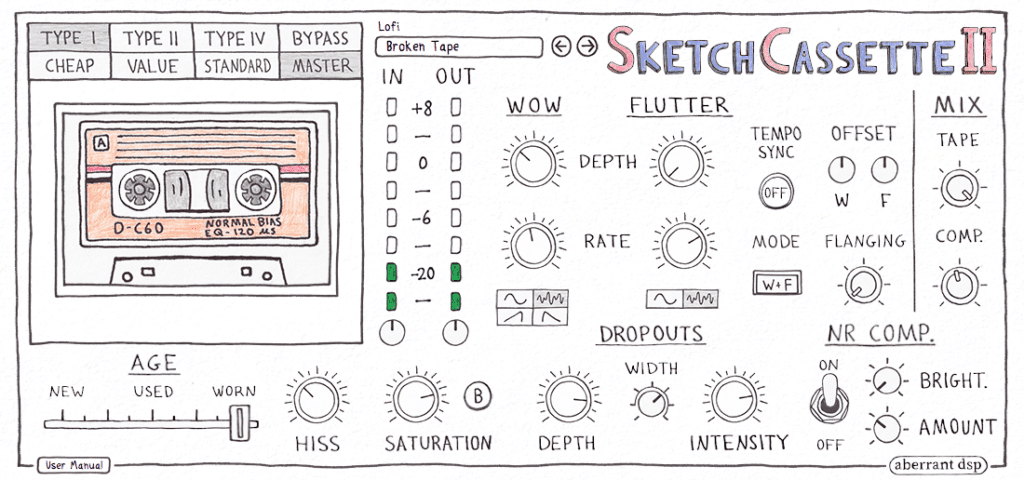Lofi music has been gaining popularity over the years as a sub-genre of Hip-Hop and electronic music. Its appeal lies in its laid-back, nostalgic sound, which creates a unique and soothing atmosphere. This makes it the perfect music for studying, relaxing, or even sleeping. So, if you wanna know how to make Lofi music, here are some tips to get you started.
| This post contains affiliate links. If you make a purchase through these links, we may earn a commission at no extra cost to you. It’s a simple way you can support our mission to bring you quality content. |
1. Get your groove on
First things first, you gotta immerse yourself in the world of lofi music. Because you read this article, I guess you’re already listening to a lot of lofi music. But instead of “just listening”, start to focus on the production side of lofi music. Pay attention to the elements that make lofi music what it is—the cool beats, the dreamy melodies, and the overall mellow vibe.
Another key element is the use of background noise in form of vinyl crackle, tape hiss and every day sounds. Explore different lofi artists and playlists to discover the nuances of the genre. This will help you develop an ear for the distinctive lofi sound.
2. Grab a cool sample
Lofi music often revolves around a cool sample. It’s like the foundation of your track. Look for samples that have that Lofi sound and feel. Think old jazz or soul records, soothing ambient soundscapes, or even snippets from vintage movies or TV shows.
Having said that, unless you’re using a service like Tracklib, I don’t recommend sampling old records or TV shows, if you plan to publish or share your Lofi tracks in the future, because that could get you into legal trouble.
Instead create your own samples, that replicate a vintage sound. Or take advantage of the numerous online resources where you can find good lofi samples to use in your music.
Don’t be afraid to experiment with different samples and see how they fit into your composition. Also try editing and rearranging samples to make them more interesting. For example make edits within the sustain of a piano or guitar chord.
3. Spice it up with effects
Effects and processing is where a lot of the lofi magic happens. Texture, noise and degradation is key, here, up to a tasteful, relaxed degree of course. Get experimental with filtering, distortion, reverb, and delay to give your music that vintage, Lofi flavor.
Tape emulation plugins are great to achieve a cohesive, compact sound. Using guitar amp and effects emulation plugins like Guitar Rig or Amplitube on non-guitar instruments can get you some cool results, too.
There are also some dedicated Lofi plugins like XLN Audio RC-20 Retro Color, which will get you the desired results easily. I covered some of the most relevant in an article, which you can read here.
Don’t hesitate to try different combinations of effects until you find the perfect blend. Just follow your intuition and trust what you like.

4. Keep it simple
Lofi music thrives on simplicity and repetition. Think about simple melodies and chord progressions with a jazzy and soulful vibe. You really don’t have to be a musical genius to create something dope, here. Just let your creativity flow and find melodies and chords that fit the lofi vibe.
Consider using basic scales and intervals to create a melodic foundation for your track. Keep in mind that less is more, here. Create melodies from just a few notes. The pentatonic scale will do almost every time. Keep the melodies repetitive, but add subtle variations and nuances to maintain the listener’s interest. Remember that the goal is to create a relaxing, cool vibe.
5. Beat it up
Like in most musical styles, the drums are the heartbeat of your Lofi track. They set the tempo and the groove. Create a laid-back, smooth drum beat. Experiment with different drum sounds and work on the rhythm until it makes you nod your head.
Use good Lofi drum samples or create your own percussive samples using your phone and and app like Koala Sampler. Pay attention to the swing and groove of the beat to give it that characteristic Lofi feel.
A heavy 8th swing and unquantized beats are typical for lofi hip hop. Consider adding vinyl crackle or other subtle background noises, like outside atmoshperes from nature or cities to enhance the vintage atmosphere.
6. Mix it like a pro
We have already discussed the use of effects, but now it’s time for the final mixdown. You want a balanced and cohesive mix where everything blends together just right.
Pay attention to the levels of each instrument or sound, and play around with panning and stereo effects. In Lofi music this means narrowing the stereo field, rather than widening it. In other words, make some or all of your instruments mono.
Make sure every element has its place in the mix. Experiment with EQ to carve out space for different elements and make them stand out. Tame high frequencies by filtering them out, to achieve that dampend, lush vibe.
Cassette tape emulation plugins can help achieve a cohesive and nostalgic sound, and add extra vintage texture to your music.
Don’t forget to add reverb and delay to give your track a sense of space and depth. For more Lofi feel, use your reverbs and delays in mono. For a more ambient vibe, use them in stereo.
Leave your drums dry to give them a more intimate feel and obtain their punch. Take your time with the mix, and make adjustments until it sounds right to you. Check your mix on different systems to make sure it sounds good everywhere.
But don’t overthink the process of mixing your track. We are creating Lofi music here, so, by definition, there’s no need for perfection. Imperfections can even make your music more interesting.

7. Team up and vibe out
Don’t go it alone! Collaborating with other artists is a great way to level up your Lofi game. Seek out fellow Lofi producers and create some magic together. The fresh ideas and inspiration that come from collaborating can take your music to new heights.
Reach out to other artists online or, even better, in real life. Collaborations can bring a new perspective to your work and help you discover exciting new directions for your music.
Exchange ideas, production tricks and resources, so you can both grow faster. Also consider swapping projects. Let your collaborator finish tracks that you got stuck with and vice versa.
8. Unleash your inner mad scientist
Last but not least, don’t be afraid to get wild and experiment. Producing music is all about being true to yourself and finding your own voice. It’s helpful to know rules, like music theory and production techniques. But don’t let yourself be bound by these rules. Also don’t try to meet other peoples expectations. In most cases, these exist only in our minds, anyway.
Get creative, take risks and embrace mistakes. They can lead to interesting new sounds that may set your music apart.
Explore unconventional techniques, play with unconventional instrumentation, or blend different genres to come up with your own signature Lofi style. Remember, the goal is to have fun and express yourself through your music.
So there you have it. With these tips, you should be ready to embark on your own Lofi music adventure. Let your creativity flow, groove to your own chilled-out beats, and make some cool tunes. The world is waiting to hear what you’ve got in store! So fire up your DAW, immerse yourself in the Lofi vibes, and enjoy the journey.
If you have any questions, please let me know in the comments and I’ll be more than happy to help:-)

